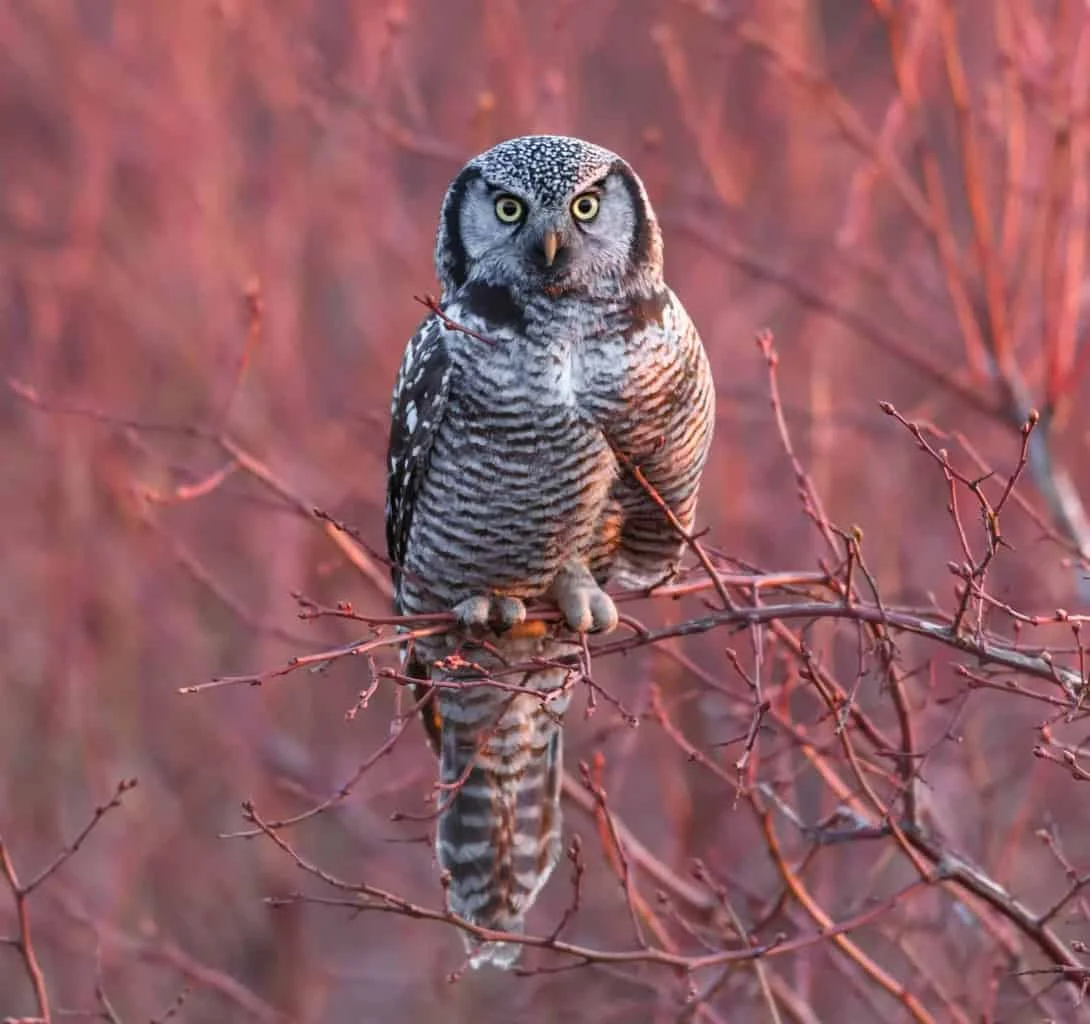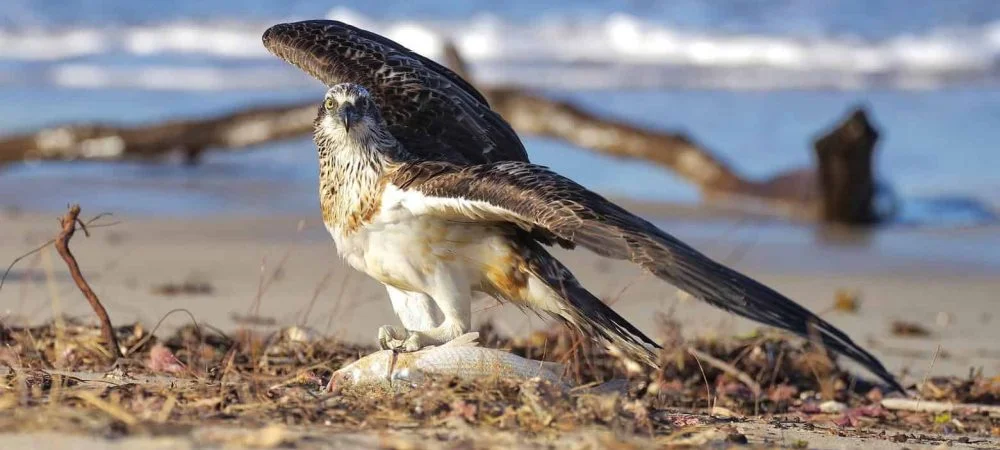
Want to learn more? This book on the Birds of Prey of North America is a fantastic read!
Kansas is a state in the Midwestern United States, bordered by Nebraska, Missouri, Oklahoma, and Colorado.
The state is known for its temperate but continental climate, with extremes between summer and winter temperatures but only a few long periods of extreme hot or cold.
Kansas is home to an inviting number of 28 state parks where residents and visitors take advantage of a plethora of outdoor activities such as hiking, camping, fishing, and a great deal of wildlife watching.
Among the wildlife, is a wide variety of birdlife including 11 different species of hawk.
Below is a profile for each hawk you are likely to see while in Kansas beginning with the plentiful Red-Tailed Hawk, ending with the occasionally seen Northern Goshawk.
Want to attract birds of prey to your yard? Take a look at our article!
What Hawks can be seen in Kansas?
Table of Contents
1. Sharp-Shinned Hawk
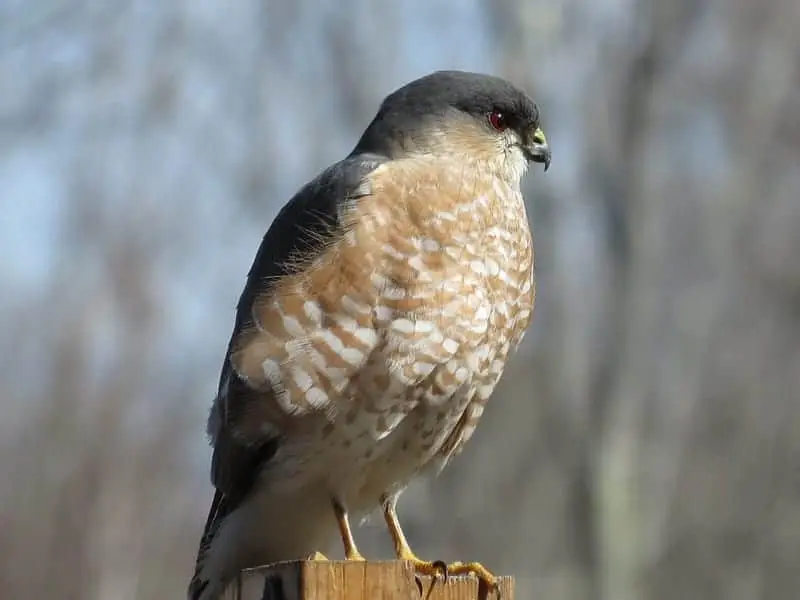
“Sharp-Shinned Hawk” by ‘Dennis Murhpy‘ is licensed under CC BY 2.0
Wingspan
43-56cm
Weight
87-218g
Life Expectancy
3 years
Diet
Robins and Thrushes
Sharp-Shinned Hawks are the smallest hawks in the entire United States, even with the females being a third larger than their partners!
Mature hawks generally have gray feathers and orange underbellies. Juvenile hawks, like other species, are brown and have white underparts.
These hawks prefer to live in thick trees and breed in large forests. Fascinatingly, Sharp-Shinned Hawks also have a non-breeding population in Kansas where they are seen in the winter, migrating north.
They have also been seen visiting backyard feeders for songbirds and other small prey, you can easily recognize them by their high-pitched cries and the alarming ‘kik-kik-kik’ sounds.
2. Cooper’s Hawk
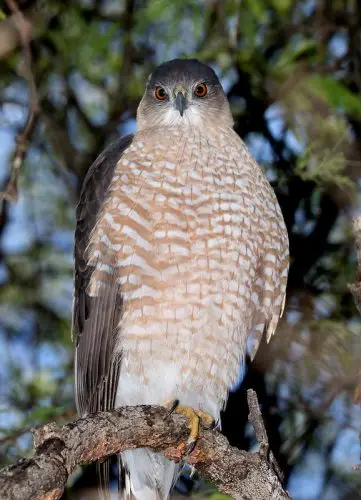
Wingspan
62-90cm
Weight
330-680g
Life Expectancy
Up to 12 years
Diet
Small Birds, Mice & Squirrels
Cooper’s Hawks are small to medium in appearance, generally they resemble the size of the average crow.
Take note, that the adult females are larger than the males. These hawks have short wings and round tails.
The matures have a pastel color and have orange underbellies while juvenile hawks display their underdeveloped streaky brown feathers.
Cooper’s Hawks have recently increased in population and are extremely defensive of their homes.
These hawks are year-round residents of Kansas, preferring to live in tree trunks in forests and wooded areas.
Interestingly, they can also be found in residential areas near bird feeders, looking for small prey.
You can recognize these hawks by their loud cak-cak-cak call that can especially be heard during breeding season in early spring.
3. Northern Goshawk
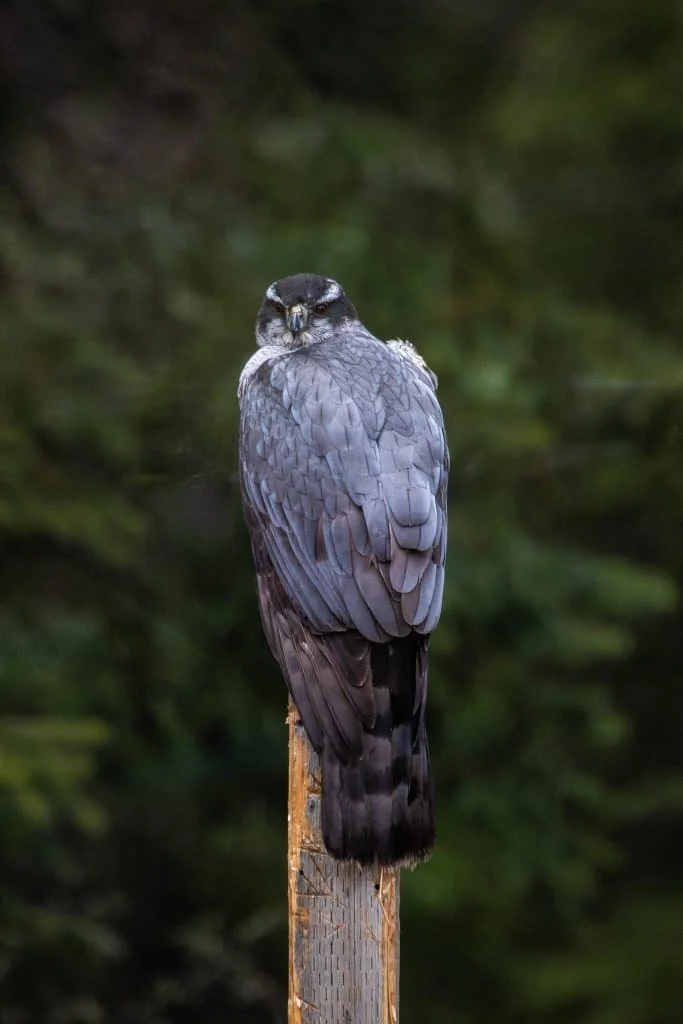
Wingspan
89-127cm
Weight
631-1364g
Life Expectancy
7 Years
Diet
Mammals, reptiles & insects
Northern Goshawks vary slightly in size, but they are typically medium to large sized, similar in size to Red-Tailed Hawks.
Female Goshawks are also larger and slightly heavier than males. The adult hawks are gray up top with similar pastel gray colored feathers displayed on their underparts.
Again, like other young hawks, these immatures are brown. Northern Goshawks are considered scarce throughout Kansas.
They like to live in dense forests and may be difficult to observe, however, you may be able to see them as you walk through mature forests with large conifer trees.
They can usually be recognized by their rapid ‘ki-ki’ sounding call. These hawks are widely known for defending their nests and their families, so be cautious when in search of them!
4. Red-Shouldered Hawk
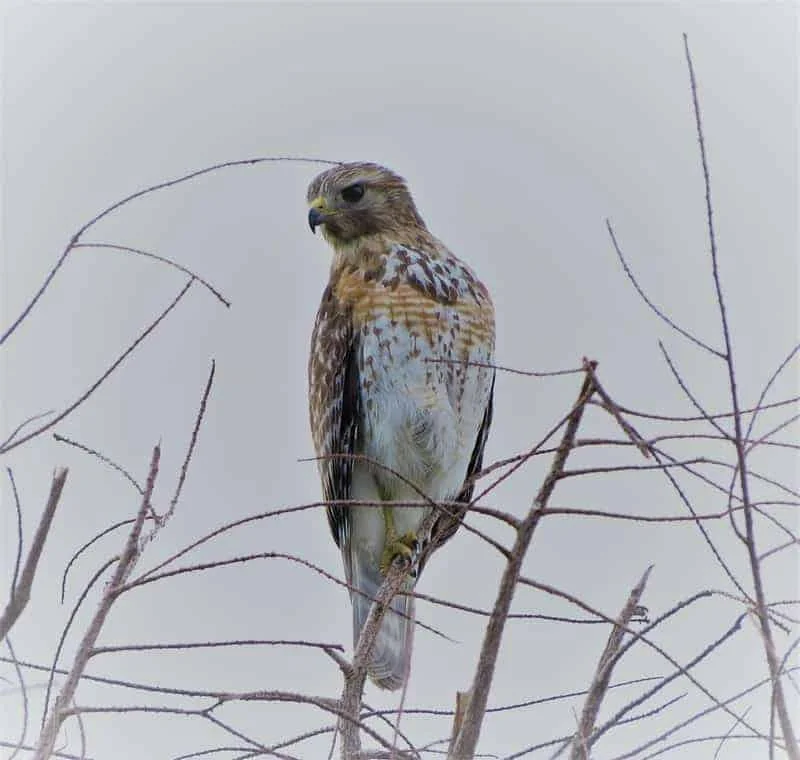
Wingspan
94-111cm
Weight
486g-774g
Life Expectancy
2 years
Diet
Small mammals, reptiles & amphibians
Red-Shouldered Hawks are large birds easily identified by their size, long tails, and bright feathers.
The mature hawks of this species have a number of different colors and patterns.
The most common color is a rich, dark orange on their underbellies with black and white patterns displayed on their wings. Juvenile hawks, however, have brown backs and white underbellies.
Red-Shouldered Hawks are year-round residents near the eastern border of Kansas and begin breeding in the early spring months.
These hawks are known to live and nest in wooded areas and forests, recycling the same nest every year.
These nests are built at high altitudes in treetops in close proximity to water sources. You’ll know these hawks are nearby when you hear their very unique ‘kee-aah’ sound.
Due to the recent increase in population over the last decades, you are more likely to see these hawks soaring high above you during the spring and summer!
5. Broad-Winged Hawk
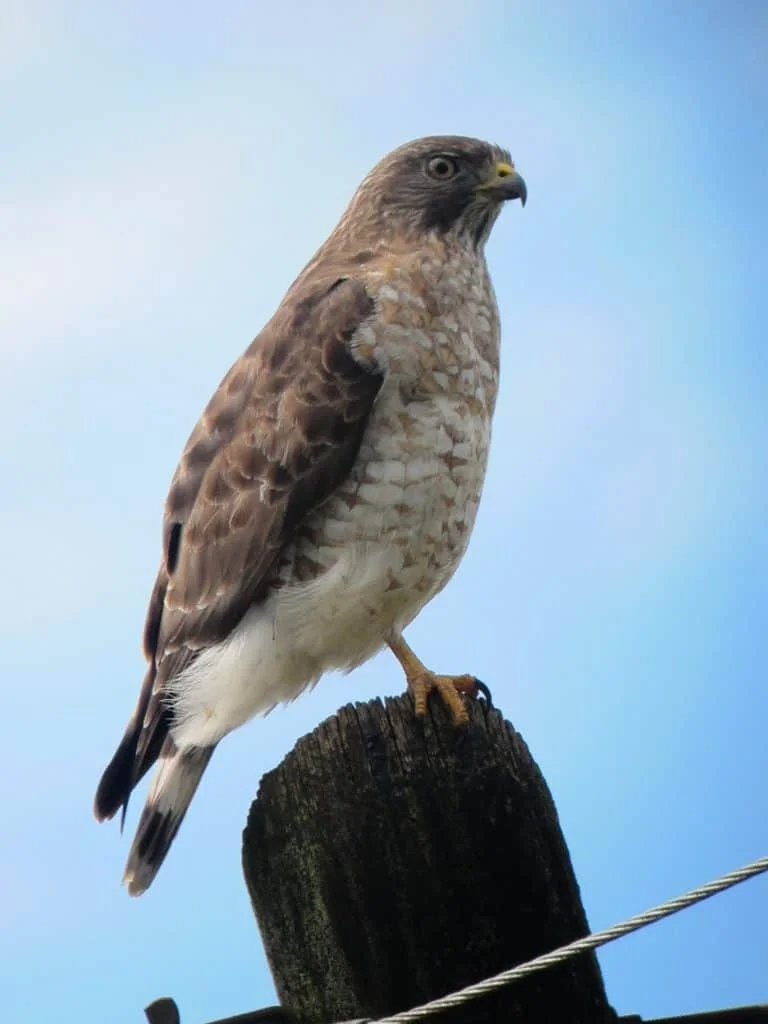
“Broad Winged Hawk” by ‘Felipe Uribe‘ is licensed under CC BY 2.0
Wingspan
81-100cm
Weight
265g-560g
Life Expectancy
Up to 20 years
Diet
Small mammals & insects
Broad-Winged Hawks are medium sized and the mature hawks of this species are a reddish brown color with interesting black and white bars on their tails.
Similar to other immature hawks, juveniles generally have light brown feathers.
The Broad-winged Hawk has a breeding-only range throughout the entire state, with the exception of the eastern border.
These hawks migrate by the thousands and can be readily spotted in forests during the summer.
Take note that you can identify them by their piercing, high-pitched whistles when they are migrating.
In fact, the males have a higher octave call than females. These hawks typically nest during April and May, in heavily wooded areas while they build their nests in tree cavities.
6. Swainson’s Hawk
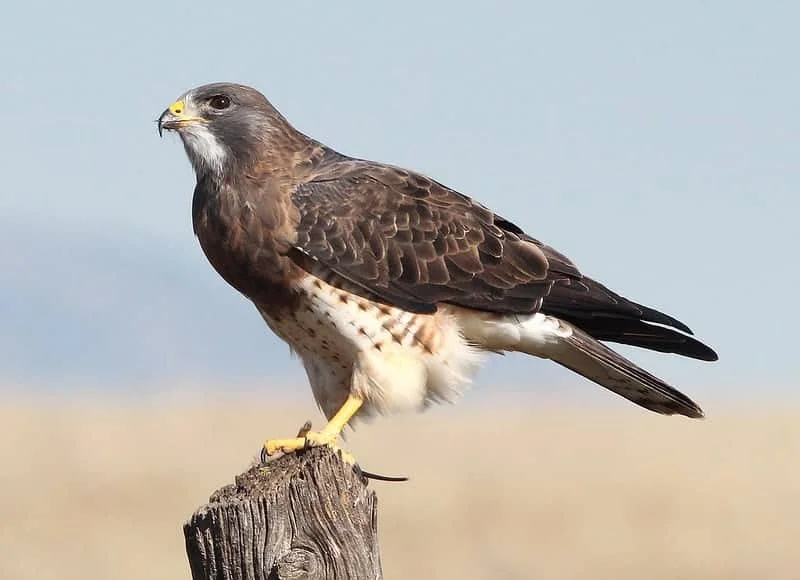
Wingspan
4 feet
Weight
693-1367g
Life Expectancy
16-19 years
Diet
Mammals & Insects
Swainson’s Hawks are large birds with large wings, though they have short tails.
Though these hawks have dark colored feathers, they usually have white underparts.
Actually, these hawks can differ in color if you look at their underparts.
Some Swainson’s Hawks can have pale feathers, and other hawks can have brown feathers.
Swainson’s Hawks migrate from great distances all the way from South America, easily spotted during the early spring months around breeding season when they search for trees to nest in.
They actually arrive in Kansas each April and spend the summers breeding and raising their young.
You can see them soaring through the sky or perched on fence posts, telephone poles, and trees in open areas.
Not only can you easily spot these hawks, but you can hear them as well. Males will be identified by their “kreeeeer” calls while females will be known for a shorter, but very similar type of call.
7. Red-Tailed Hawk
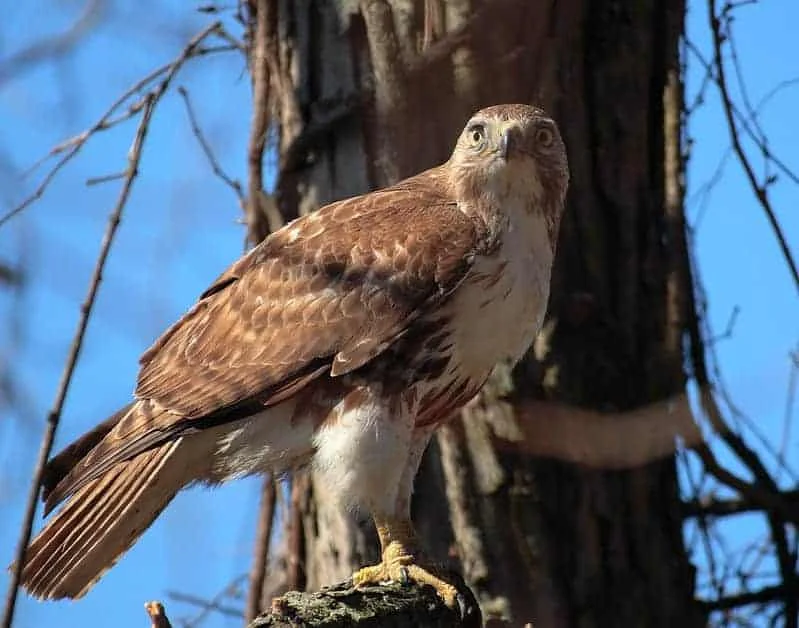
Wingspan
114-133cm
Weight
900-1460g
Life Expectancy
10-15 years
Diet
Small mammals, mice & voles
The Red-Tailed Hawk is widely known as The United States’ second largest hawk.
These birds are also recognized as North America’s most common hawk. They are named for their red-tails, though their underbellies have pale-colored feathers.
Similar to other species of hawks, immatures’ colors are not fully developed, so they lack red tails. Red-Tailed hawks have an unmistakable, raspy sounding ‘kee-eeeee-arr” call.
It’s interesting to note that this call differs during the mating and breeding seasons when these hawks have more of a shrill cry.
Actually, it’s sometimes easier to recognize these hawks during mating season as the males attract their partners by circling high in the sky.
Red-Tailed hawks tend to be a lone species as they take habitat in open spaces like fields, perched in tall trees during the warm summer months.
These hawks live in Kansas all year long, most active during the day or early morning. You’ll most likely see Red-Tails high in the sky looking for prey or along roadsides on telephone poles.
8. Rough-Legged Hawk
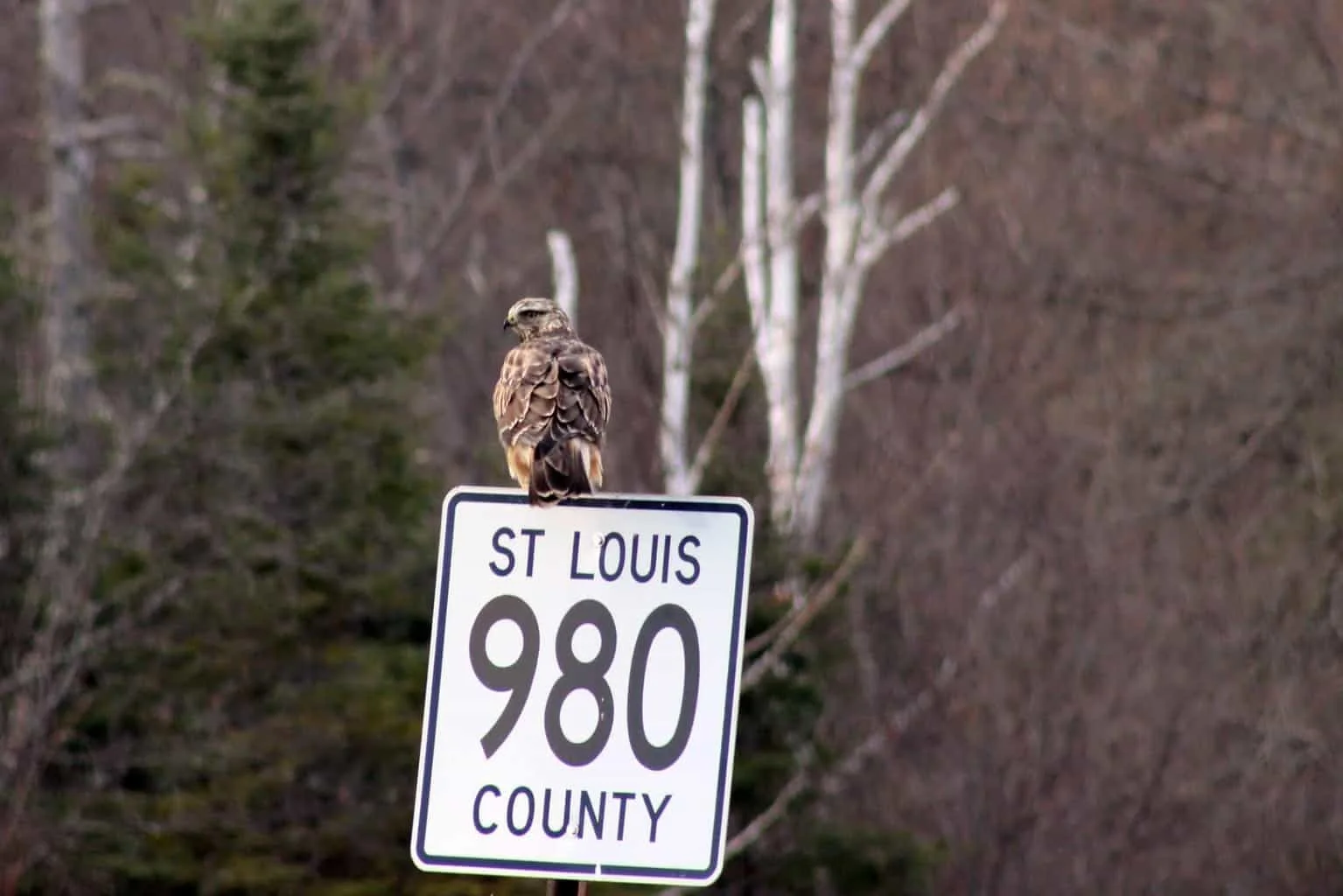
Wingspan
132-138cm
Weight
715-1400g
Life Expectancy
Up to 18 years
Diet
Small rodents
Rough-Legged Hawks are a medium-large sized species with an array of differing feather colors.
They have distinct feather patterns and pastel heads with much darker colored bellies. Take note that these hawks tend to have light tails with dark feathers near the tip of their tails.
Additionally, Rough-Legged Hawks are one of the only American hawk species to have feathered legs all the way down to their toes.
Rough-Legged Hawks can be commonly seen throughout the entire state of Kansas, but winter is the best time to spot one of these hawks.
You can find them near marshy areas, fields, or plains as they create their nests from sticks from low forests.
The Rough-Legged Hawks have a memorable call that is said to mimic the hiss of a cat.
9. Ferruginous hawk
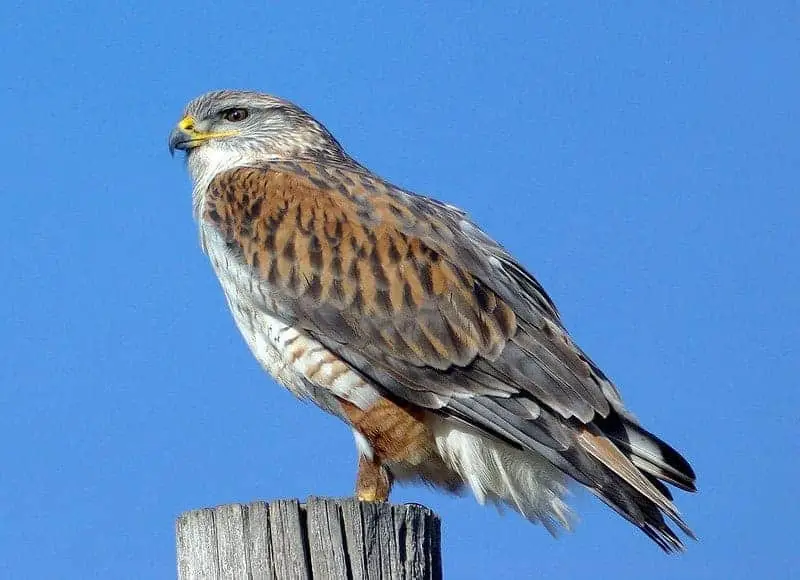
Wingspan
133-142cm
Weight
977-2074g
Life Expectancy
16-20 years
Diet
Small mammals
Ferruginous Hawks are very large birds with large heads.
They usually have pastel feathers on their wings and underparts, but they have orange, rust colored feathers along their legs on their bellies.
Ferruginous Hawks like to live near dry lands and open fields. They are also seen in smaller forests where they build their nests.
The Ferruginous Hawk is frequently seen throughout Kansas. They are typically seen year-round near the western border, except in the winter when they are scarce going from west to east.
These hawks can also be seen in areas east of Wichita.
They may also be observed in the winter as they travel in groups to hunt near prairies or scoping out their prey from telephone poles.
Mature hawks can be recognized by a raspy, squealing sound while the juvenile hawks are known for high-pitched cries.
10. Northern Harrier
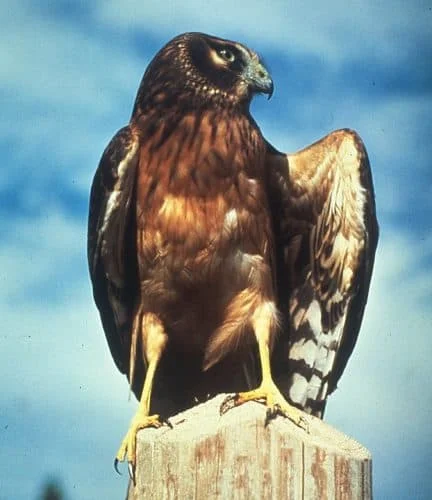
Wingspan
120cm
Weight
390g
Life Expectancy
16 years
Diet
Rodents and small birds
Northern Harriers are a medium-sized species with usually thin wings and longer tails.
These hawks tend to be gray or brown, with a broad white stripe across their tails.
Females and immatures are brown, while adult males are a pastel gray with white underbellies. Interestingly, Northern Harriers are deemed recognizable by their owl-like appearances.
Not only can you recognize these hawks by appearance, but also by sound. Males give an easily identifiable series of ‘kek’ calls, usually when they feel endangered by common predators.
You may also recognize female Northern Harriers by their high octave whistles. Northern Harriers like to live in wetlands or grasslands, and prefer to nest in close proximity to fields and open waters.
Northern Harriers are abundant in southwestern Kansas, usually seen flying low over grasslands and fields.
Northern Harriers are migratory birds, especially common in the winter months. Breeding season is an optimum time to spot these hawks as primary females breed April through July, with secondary females breeding May through September.
11. Harris's Hawk
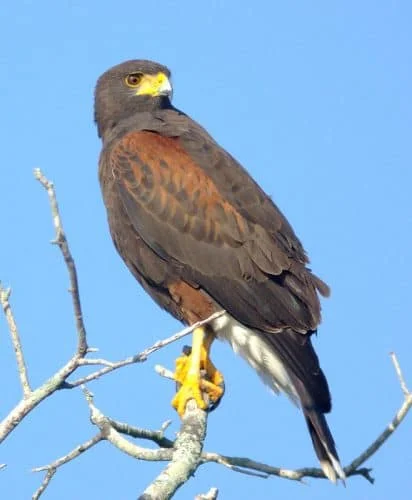
Wingspan
110cm
Weight
700g
Life Expectancy
15 years
Diet
Small mammals, birds & rodents
Harris’s Hawks classify as medium to large sized birds that are overall brown, though they have vivid colored shoulders, with white tips on their tails.
Immature hawks can be identified by their many white markings on their underbellies.
You can also identify these hawks by their threatening sounding call when they are provoked by predators or people.
Their scratchy sounding calls can last anywhere up to three seconds long. Harris’s Hawks are occasionally observed in Kansas, though they are not as prevalent as the other mentioned species.
However, if you are looking to spot one, you’re likely to see them during the summer months nesting in shrubs, tall trees or even architectural structures!

More Articles.
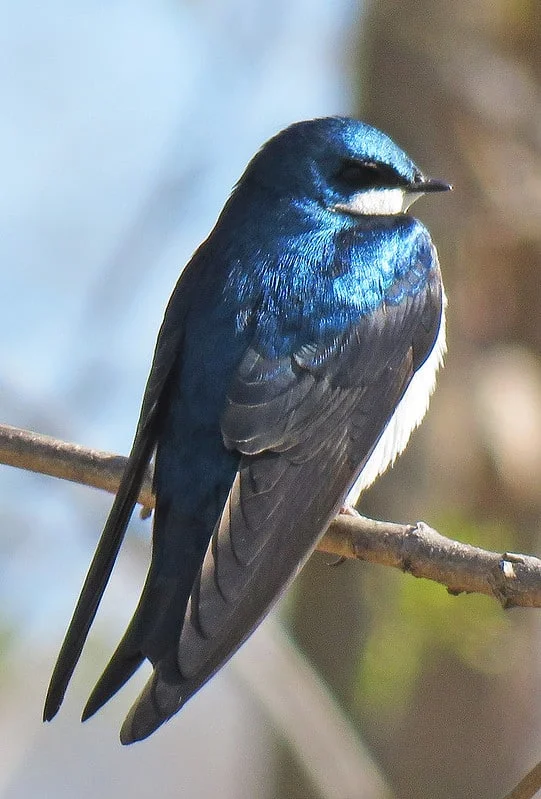
North American Birds with Blue Wings (13 Species with Pictures and Sounds)
North America is filled with many wonderful birds with blue wings – in fact, there
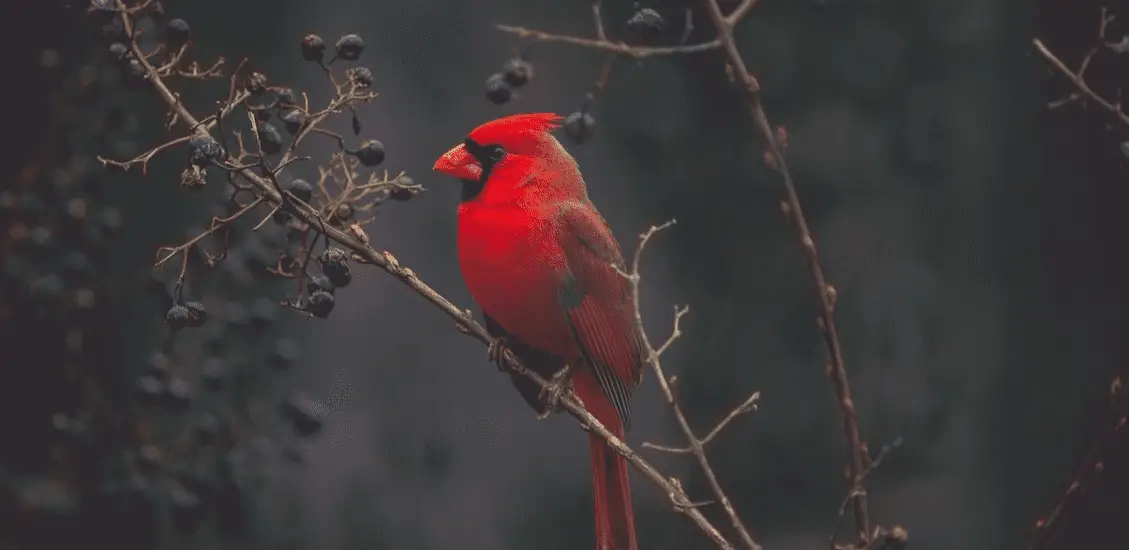
What does it mean when you see a Cardinal?
There are some truly amazing things that the cardinal can represent in your life, whether

About Us
We are avid bird-watchers who recently retired, allowing us more time to travel the world. Fortunately, we have managed to visit numerous countries around Europe, Asia, and America. Watching and photographing birds has been a passion for many years and we are making the most of the extra time on our hands!

